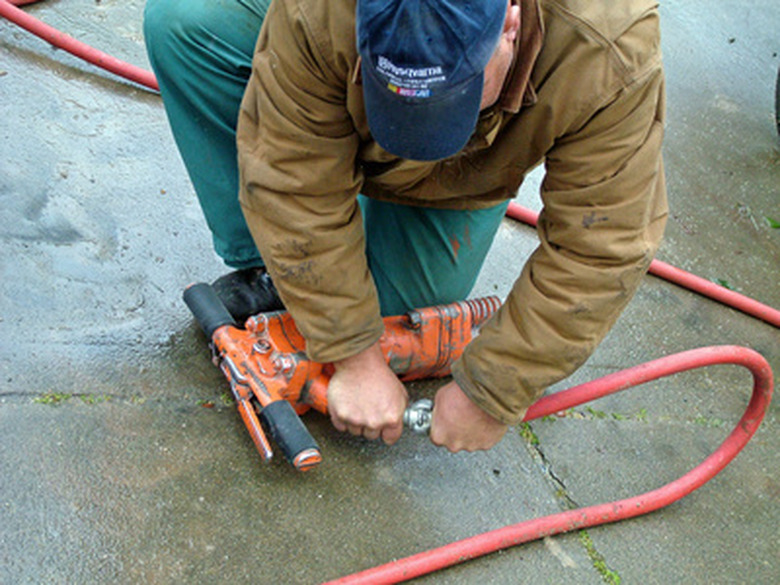Circuit Breaker Requirements For A 7.5 HP Air Compressor
A 7.5-horsepower electric motor on a compressor draws quite a bit of electricity. If you have an incorrectly sized circuit breaker, it will always trip, shutting down your compressor in the middle of a job. Breakers are sized by their amperage ratings. Horsepower does not convert directly to amps, therefore a knowledge of the formulas of electricity is required. While it may seem simple at first to determine the breaker size, peering below the surface reveals it is actually quite complex.
Horsepower to Watts Conversion
Horsepower to Watts Conversion
According to the University of Wisconsin, one horsepower equals 746 watts. Since you have a 7.5 horsepower motor, multiplying 7.5 by 746 results in 5,595 watts of power being consumed. This is your starting point.
Watts to Amperage Conversion
Watts to Amperage Conversion
All breakers are sized up in amperage capacity, or the common term "ampacity." Northern State University instructs that voltage times amperage equals watts. You have a wattage draw of 5,595 watts. Read the tag on the motor to determine the voltage requirements. The equation has to be "flipped around" to solve for amperage. Dividing watts by volts will yield amperage. The tag on the motor may state 240 volts is the requirement. Therefore dividing 5,595 by 240 equals 23.23 amps.
Final Breaker Sizing
Final Breaker Sizing
The compressor, if designed for 240 volts, will have a running current draw of 23.23 amps. You cannot size a breaker up to this number, however. Other factors play into the sizing. First, at start-up most motors draw more power than at running. If you do not account for this, your breakers will trip at start up. The second factor is the voltage considerations. If the voltage on the motor tag specifies 480 volts, the equation has to be reworked. Dividing 5,595 watts by 480 volts equals 11.65 amps of running current draw. Depending on what the voltage, amperage, and wattage requirements are on the motor tag, a qualified electrician will be able to assist you with the final breaker sizing.
References
Cite This Article
MLA
Oldhand, Tony. "Circuit Breaker Requirements For A 7.5 HP Air Compressor" sciencing.com, https://www.sciencing.com/circuit-75-hp-air-compressor-7528169/. 24 April 2017.
APA
Oldhand, Tony. (2017, April 24). Circuit Breaker Requirements For A 7.5 HP Air Compressor. sciencing.com. Retrieved from https://www.sciencing.com/circuit-75-hp-air-compressor-7528169/
Chicago
Oldhand, Tony. Circuit Breaker Requirements For A 7.5 HP Air Compressor last modified March 24, 2022. https://www.sciencing.com/circuit-75-hp-air-compressor-7528169/
